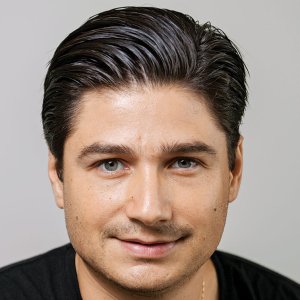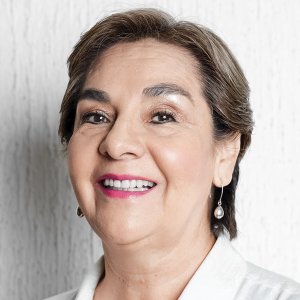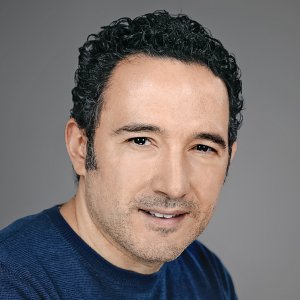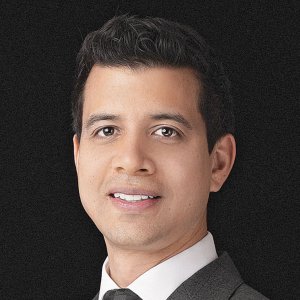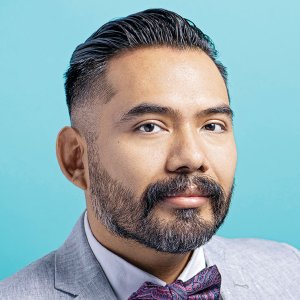The Medical Teacher: An Asset of the Health System

STORY INLINE POST
Teaching medicine presents several challenges that make it a complex activity. Medical education requires effective planning to properly manage such a complex, didactic activity. Therefore, it is important to ensure a collaborative, constructive, and respectful link between academic activities, healthcare needs and tasks in providing care.
The quality of training is inseparable from the quality of care and research. These are not different activities but social functions that intersect and must be coordinated through knowledge management; likewise, they must be aligned with the social mission.
Academic medicine requires multidisciplinary professionals capable of developing their medical work while researching/publishing, teaching and training continuously. Currently, there are many professionals who combine all these tasks.
Academic medicine is consolidated when, in a deliberate way, these three substantive functions are articulated and developed synergistically. An academic health center can associate the most advanced knowledge with problem-solving and develop transdisciplinary original and relevant research on complex problems, which is simultaneously endowed with social transcendence. In addition, the training processes are oriented not only to educate students in the ability to perform their professional functions but also in research, innovation, and continuous improvement of practice.
There will be no effective progress in academic medicine in Mexico if training and updating processes for academic staff are not established. The training processes for teachers must take place on two levels: The first, aimed at promoting an update to the disciplinary field. The second is to develop the pedagogical training of academics (favoring the development of teaching competencies), to use experiential learning, to design instructional environments, to encourage complex learning and to apply the development of collaborative learning, in addition to promoting the use of process-centered educational methods, such as experiential learning, self-directed learning and the ability to contend with complexity.
Since the Flexner report in the 20th century, the teaching and learning process has evolved through science learning, problem-based learning, competency-based learning, and perspective learning. This evolution provides a consensus that educators need to develop competencies in their students to prepare them for an uncertain future. Competency refers not only to core knowledge or instrumental skills but to interpersonal and systemic abilities required for lifelong learning. This transformation requires changes in both the educational model and faculty development programs.
The competency-based approach, although not without controversy, has been imposed in education, and particularly in medical education. It has not been easy to conceptualize it, but apparently a unified or, at least, more homogeneous vision of what this approach means has already been reached. It has been possible to establish more clearly the link between training and professional, between the academic and the workplace, between school and work, between educational and health institutions.
Worldwide, accreditation agencies, governmental, and institutional regulations increasingly demand a formalization of the medical educator’s roles and competencies to guarantee desired performance results. The General Medical Council (GMC), the UK’s medical regulatory body, stated in its document Good Medical Practice that all doctors should adopt the skills, attitudes and practices of a good teacher.
In Mexico, one of the most important achievements in the progress toward competency-based education was that of the Mexican Association of Faculties and Schools of Medicine (AMFEM), which through a laudable coordination effort, laid the foundations for the design of competency-based programs and curricula, which has allowed the approximation of proposals and to share experiences between clearly different entities. But to honor this perspective, the AMFEM itself identified the need for teachers to also exhibit their pedagogical skills and themselves be trained under this approach. In this publication, Perfil por competencias docentes del profesor de Medicina - AMFEM (Profile by teaching competencies of the professor of Medicine - AMFEM), the fundamental competences of planning, organization and didactic execution, promotion of values, generation of knowledge, and evaluation stand out, all oriented to the learning of students and the best healthcare in society.
The general competence of medical teachers was conceptualized as: The ability to promote in students a training and updating that responds effectively to the social demands of medical care, education and research. Based on the general concept, the main functions of the teachers were selected as a guide to elaborate the "specific competences" and to define and organize their components into units and elements of competence. These functions, according to the proposal, are the following:
· Design or redesign of study plans and programs.
· Design and organization of methods, practices, and didactic resources.
· Coordination of educational processes.
· Promotion of professionalism.
· Design and application of evaluation instruments.
· Participation in the generation of scientific knowledge.
With the purpose to improve the quality of education in teachers, it is important to include an adequate faculty development program to educate them on the required competences according to the desired institutional academic excellence. The target of quality education can only be achieved once the quality of teachers is enhanced. This includes the development of competencies for teachers, since they are the primary agents for quality education.
Faculty Development for Clinical Educators of Competencies
Several authors have recommended faculty development programs for clinical educators. It is known that faculty development programs can improve teaching skills and increase scholarly productivity. Training, mentoring, and support directed at medical education appear as crucial for the success of clinician-educators as dedicated research experience is for physician-scientists. Through content analysis, it has been described that the Top 5 major areas that proved to be critical to effective clinical teaching were: question strategies, physical examination instruction, engagement of multiple learner’s levels, learner-focused teaching, and time management.
Teaching in the clinical environment is a multifaceted endeavor that requires innovative approaches and must be recognized as a complex learning situation influenced by the learning content, the setting and the actions and interactions of the participants. University hospitals frequently expect clinicians, untrained in educational practice, to deliver teaching as an adjunct to high levels of patient service delivery. In many health institutions, including teaching hospitals and medical schools, educators still lack a structured career development pathway. Most junior faculty begin their careers with little formal training in education. For this reason, it is imperative to design and implement faculty development programs that lead to a satisfactory and rewarding task for the clinician educator.
One example in Latin America is the School of Medicine at Tecnológico de Monterrey, which is a private, nonprofit university in Mexico that has been developing pedagogical skills among its faculty members. Since its founding in 1978, a student-centered educational approach has been implemented. The faculty members, from basic science to medical science, have been facilitators, using problem-based learning and collaboration as teaching strategies. Faculty have participated in several courses regarding innovative pedagogical methods for higher-education environments. Besides the benefits of the original training program offered by the university, the content was not customized for clinicians who do not educate in a traditional classroom. The Development Program for Clinical Educators (DPCE) is a competency-based model that was designed to train faculty members to educate students in a medical context. The model for the Development Program for Clinical Educators integrates six competencies for faculty members on medical contexts: applying basic teaching skills; fostering learning in the clinical setting; assessing and debriefing performance; managing healthcare-related educational technology; educating on bioethics and citizenship, and managing healthcare educational technology. The purpose of the Development Program for Clinical Educators was to improve the faculty competencies to be applied to educational scenarios to enhance medical student’s outcomes.
The need for faculty development programs to improve pedagogical practices in medical education is felt by every higher-education institution. The challenge is to upgrade and update the competencies of educators as rapidly as emerging learning trends. Medical education program design should develop an integral approach from several disciplines, perspectives, and competences to graduate doctors for an uncertain future. The educational program must prepare faculty to innovate and propose relevant programs.
Teacher training should be designed to accompany teachers throughout the innovation processes of their educational practice. The ultimate goal of medical teacher training is to improve the quality of both education and care and the innovation of these.
Sources:
-
Faculty Development for Clinical Educators: A Competency Model for Continuous Improvement. 2018. Silvia Olivares, Mildred Vanessa López Cabrera, Martha Ruth Loyola Segura, Jorge E. Valdez-García. In book: Advancing Medical Education Through Strategic Instructional Design Edition: Advances in Medical Education, Research, and Ethics (AMERE) Book Series Publisher: IGI Global Editors: Jill Stefaniak
-
El perfil curricular que deberá tener el futuro médico clínico. January 2021. In book: La Academia Mexicana de Cirugía. Épocas, saberes y personajes. Valdez García Jorge. Publisher: Editorial Alfil, S. A. de C.
-
Una agenda para el cambio de la educación médica en México (Horizonte 2030). ASOCIACIÓN MEXICANA DE FACULTADES Y ESCUELAS DE MEDICINA, A. C. (AMFEM) Luis Felipe Abreu Hernández, Ricardo Leon Bórquez. Noviembre 2016 MASSON DOYMA MÉXICO S.A.
-
Perfil por competencias docentes del profesor de Medicina. ASOCIACIÓN MEXICANA DE FACULTADES Y ESCUELAS DE MEDICINA A. C. (AMFEM). SECCIÓN DE EDUCACIÓN MÉDICA DE LA AMFEM (SEM-AMFEM) Enrique Aguirre Huacuja, Francisca Castellanos Barrales, Humberto Galicia Negrete, Alfredo González Torres, Oscar Fabián Jarquín, Carlos Ojeda Blanco, Joel Sánchez Alor, David Servín, Rosalva C. Vargas Almaraz, J. Jesús Vázquez Esquivel10








 By Jorge Valdéz | Dean -
Fri, 05/13/2022 - 11:00
By Jorge Valdéz | Dean -
Fri, 05/13/2022 - 11:00

